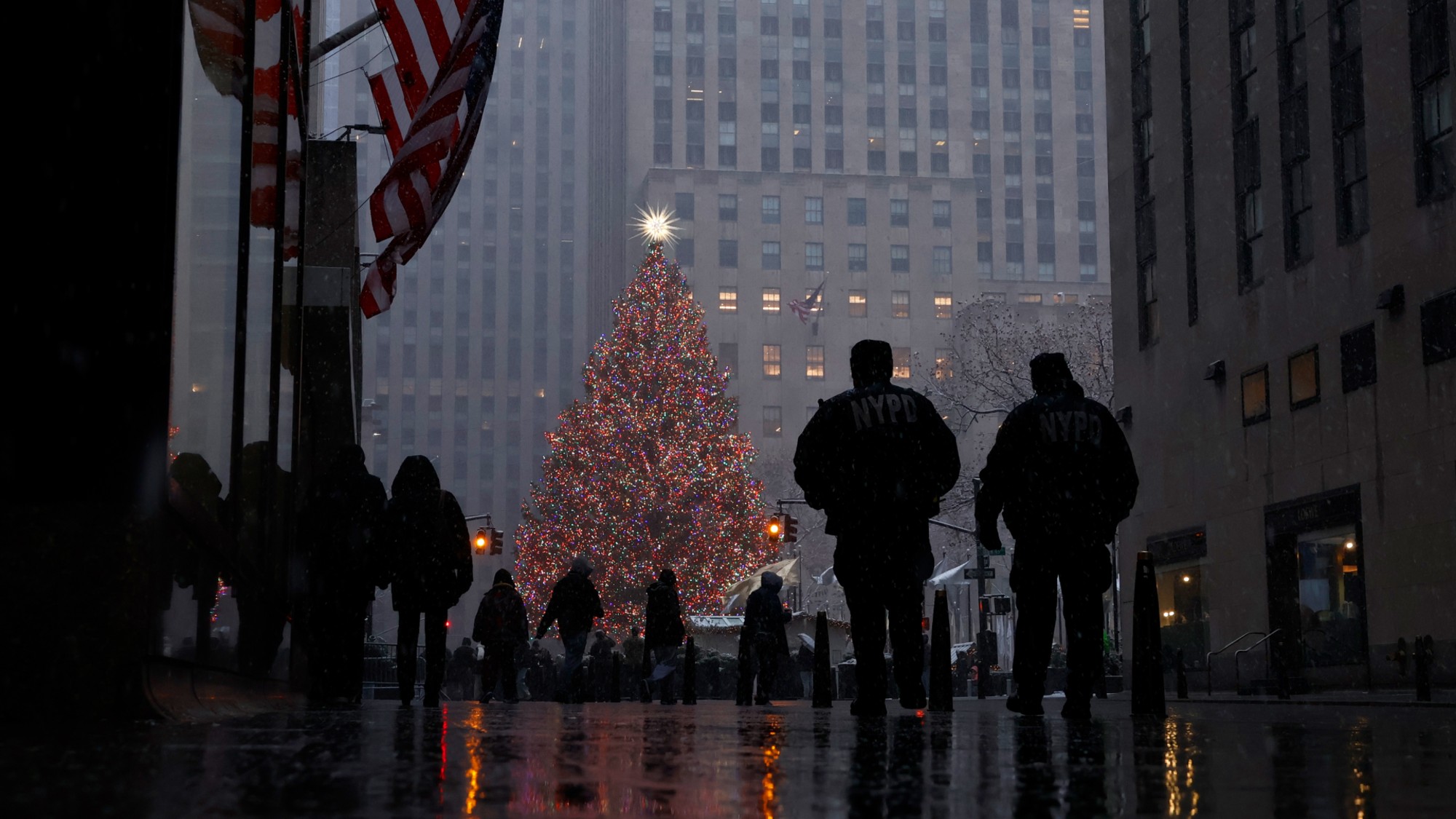The threat from space
Astronomers recently warned that an asteroid might be headed for a devastating collision with Earth. It turned out to be a false alarm. Is there anything in the heavens actually worth worrying about?
Is the threat real?
Just ask the dinosaurs. Massive asteroids have collided with our planet with some regularity over the eons, leaving more than 150 massive craters. It is nearly certain that it will happen again; the only question is when. About 65 million years ago, an asteroid measuring 10 kilometers in diameter slammed into the water north of Mexico’s Yucatán Peninsula, causing tidal waves, triggering earthquakes, darkening the skies, and killing off 75 percent of all animals, including the dominant species on the planet—dinosaurs. In 1908, an asteroid exploded over Tunguska, in Siberia, with the force of a 10-megaton nuclear blast, flattening trees over 1,000 square miles. That rock was probably only about 100 meters in diameter. On Jan. 7, 2002, a 300-yard asteroid stunned astronomers when it whizzed past Earth at a distance of about 500,000 miles—on the scale of the solar system, a relatively close call. No one saw it coming until it was 12 days away.
What if it had hit us?
The Week
Escape your echo chamber. Get the facts behind the news, plus analysis from multiple perspectives.

Sign up for The Week's Free Newsletters
From our morning news briefing to a weekly Good News Newsletter, get the best of The Week delivered directly to your inbox.
From our morning news briefing to a weekly Good News Newsletter, get the best of The Week delivered directly to your inbox.
If that particular asteroid had hit one of Earth’s continental landmasses, a panel of astronomers told Congress this year, “it would have destroyed nearly everyone and everything in an area about the size of New England.” And that asteroid, while sizable, was not particularly large. If Earth were again struck by a 10-kilometer asteroid like the one that struck 65 million years ago, it would ignite a massive, white-hot explosion as hot as the sun’s surface. About 100 trillion tons of dirt, rock, and other matter would be thrown high into the atmosphere, raining fire on the planet. Once it cooled, the soot would linger in the skies for up to six years, blocking the sun and plunging Earth into an unyielding winter. If the asteroid were to land in the ocean, on the other hand, the splash would create a tsunami 1,000 feet high. The wave would race toward land as fast as a 747—over 500 mph—destroying hundreds of coastal cities and instantly killing tens of millions of people.
Is another calamity likely?
Fortunately, the odds are pretty long. The solar system is full of rocky debris, but only a tiny percentage comes close enough to Earth—within 30 million miles—to pose a potential problem. Most asteroids are still discovered mainly by accident; through earthbound telescopes, they’re extremely hard to discern against a background of millions of stars. To reduce the uncertainty, in 1998 Congress ordered NASA to launch a 10-year effort to identify Near Earth Objects—asteroids whose paths cross Earth’s orbit. Astronomers estimate that there are about 1,100 NEOs big enough to cause considerable damage; so far, 650 have been spotted, tracked, and found to have no chance of hitting Earth. In September, astronomers spotted a new asteroid that briefly caused worldwide alarm, then was reclassified as another miss.
Suppose there were a real threat?
A free daily email with the biggest news stories of the day – and the best features from TheWeek.com
We’d have to get very creative very quickly. Asteroids race through space far too fast to be intercepted by missiles. But we could try to mimic the plot of the film Armageddon, and send up a manned mission to land on the asteroid. There, they could bury an H-bomb at least 100 meters deep, and blast the rock apart from inside. But that solution has its own pitfalls. Blowing an asteroid to smithereens could conceivably scatter it over the entire planet, causing more widespread devastation than would a single localized impact.
So what are the alternatives?
We’d have better luck detonating one or more nuclear bombs near, rather than on, the asteroid. Such an approach would deliver plenty of sideways momentum—as opposed to explosive energy—and cause the asteroid to shift its orbit, thereby missing us. Another proposal now before the European Space Agency calls for landing a series of robotic missions on an incoming asteroid. These devices would then fire up low-power thrusters, altering the rock’s trajectory. Some scientists have even suggested coating killer asteroids in white paint or another reflective material. By reducing the amount of heat the asteroids absorb, the material would gradually change their path through space.
Are any of these plans being developed?
Not seriously. For the moment, space agencies around the world are concentrating on detecting asteroids rather than inventing ways of avoiding them. NASA spends about $3 million a year on its tracking efforts, but some scientists think that’s not enough. Former space shuttle astronaut Thomas D. Jones recently joined 10 astronomers and historians to petition Congress to increase NASA’s budget for detecting asteroids to at least $20 million. The astronomers warned not only that the current detection program would miss 10 percent of the large asteroids in Earth’s vicinity—but that it completely ignored hundreds of asteroids below a kilometer in diameter, which could easily destroy a city. Within the next century, the panel said, there’s a 20 percent chance that an asteroid that size will strike Earth. “One of the big questions facing us as a species is, How much stuff is out there that poses a danger to us?” asked Lucy Ann McFadden, a University of Maryland astronomer who signed the petition. “We really don’t know.”
Trouble with a tail
-
 How climate change is affecting Christmas
How climate change is affecting ChristmasThe Explainer There may be a slim chance of future white Christmases
-
 The MAGA civil war takes center stage at the Turning Point USA conference
The MAGA civil war takes center stage at the Turning Point USA conferenceIN THE SPOTLIGHT ‘Americafest 2025’ was a who’s who of right-wing heavyweights eager to settle scores and lay claim to the future of MAGA
-
 The 8 best drama movies of 2025
The 8 best drama movies of 2025the week recommends Nuclear war, dictatorship and the summer of 2020 highlight the most important and memorable films of 2025